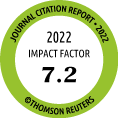Return to content in this issue
Treatment and Outcome in Deficiency of Adenosine Deaminase 2: A Literature Review
Zhang B1, Xu N1, Chen J2, Zhang S3, Huang X2, Shen M4, Zeng X1
1Department of General Internal Medicine, State Key Laboratory of Complex Severe and Rare Diseases, Peking Union Medical College Hospital, Chinese Academy of Medical Science & Peking Union Medical College, Beijing, China
2Department of General Internal Medicine, Peking Union Medical College Hospital, Chinese Academy of Medical Science & Peking Union Medical College, Beijing, China
3Department of Internal Medicine, Peking Union Medical College Hospital, Chinese Academy of Medical Science & Peking Union Medical College, Beijing, China
4Department of Rheumatology and Clinical Immunology, State Key Laboratory of Complex Severe and Rare Diseases, Peking Union Medical College Hospital, Chinese Academy of Medical Sciences & Peking Union Medical College, National Clinical Research Center for Dermatologic and Immunologic Diseases (NCRC-DID), Key Laboratory of Rheumatology and Clinical Immunology, Ministry of Education, Beijing, China
J Investig Allergol Clin Immunol 2022; Vol 32(1)
: 13-22
doi: 10.18176/jiaci.0748
Objectives: Deficiency of adenosine deaminase 2 (DADA2) is a rare disease with varying phenotypes and disease outcomes. We evaluated the treatment of DADA2 and explored the factors associated with disease outcome.
Methods: A systemic literature review of DADA2 was conducted. Cases were included if they had documented detailed genotypes, phenotypes, treatment protocols, and outcomes. Patients were categorized as having uncontrolled and controlled disease. Factors associated with disease outcome were analyzed using logistic regression models.
Results: The study population comprised 242 DADA2 patients with data on treatment protocols and responses, of whom 17 required no treatment. Tumor necrosis factor a inhibitors (TNFi) were effective in 78.6% (103/131). Hematological abnormalities and increased acute phase reactants are independently associated with the effectiveness of TNFi (OR, 0.21 [95%CI, 0.07-0.661; P=.007] and 9.62 [95%CI, 2.31-40.00; P=.002, respectively). Among the 225 patients requiring active treatment, 157 (69.8%) had controlled disease and 68 (30.2%) uncontrolled disease. Neither age of disease onset nor genotype was associated with disease outcome. Increased acute phase reactant values, constitutional symptoms, neurological symptoms, and treatment with TNFi were independently associated with disease control, while recurrent infections and severe vascular events were the main causes of mortality (10/21 and 6/21, respectively).
Conclusion: In patients requiring treatment, symptoms of systemic inflammation and vasculitis and treatment with TNFi are associated with disease control. Recurrent infections and severe vascular events should be treated intensively, as they are the main causes of death. Hematological abnormalities should be monitored, as they decrease the effectiveness of TNFi.
Key words: Deficiency of adenosine deaminase 2, Treatment, Outcome, TNF-a inhibitor
| Title | Type | Size | |
|---|---|---|---|
 |
doi10.18176_jiaci.0748_supplemental-materials.pdf | 452.50 Kb |



